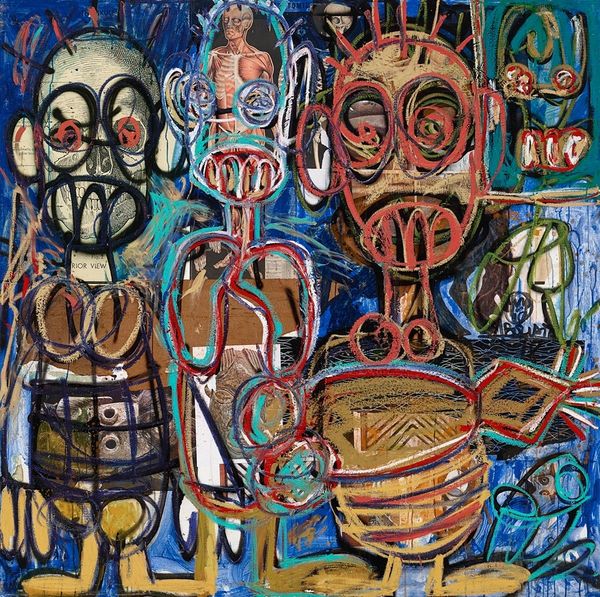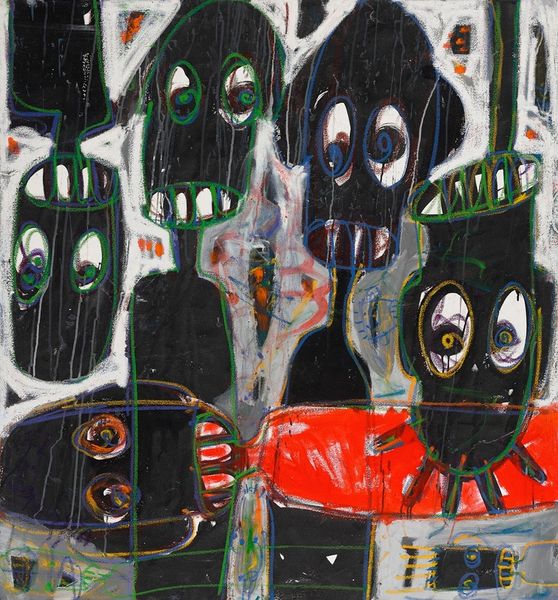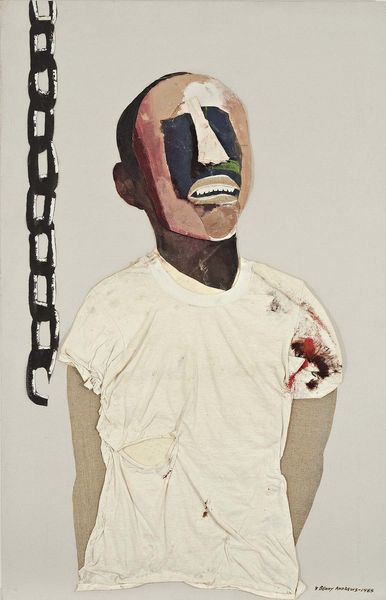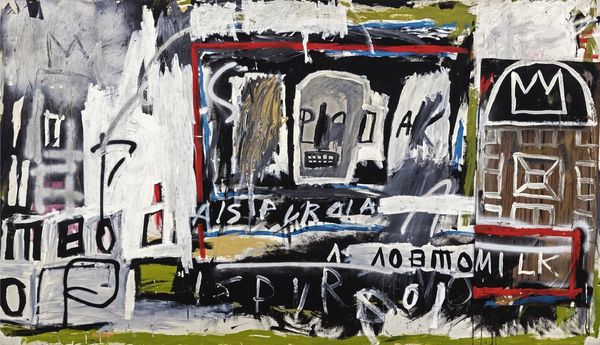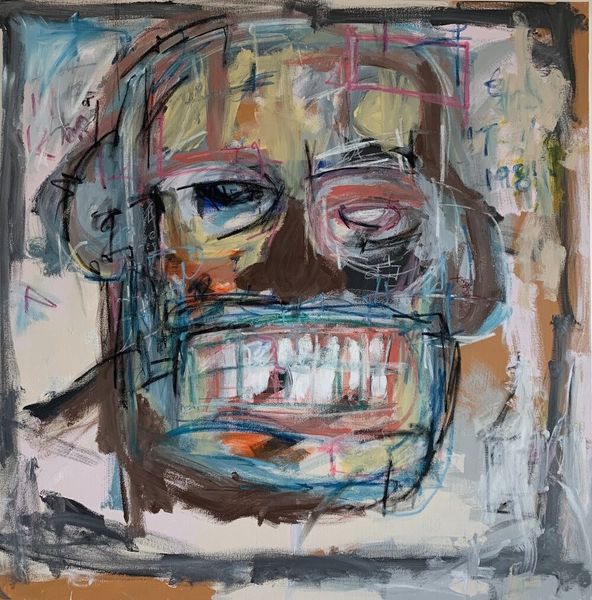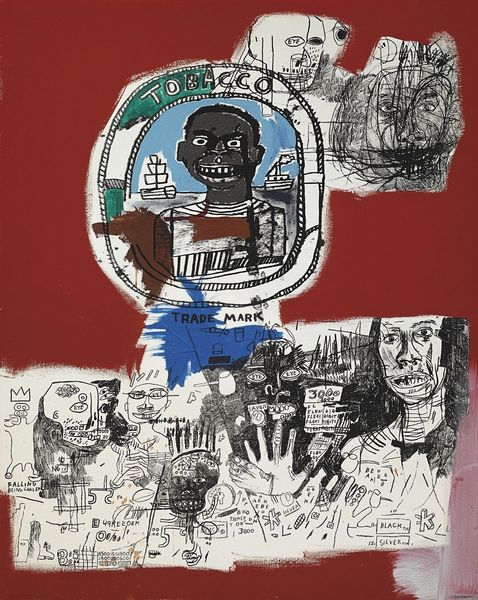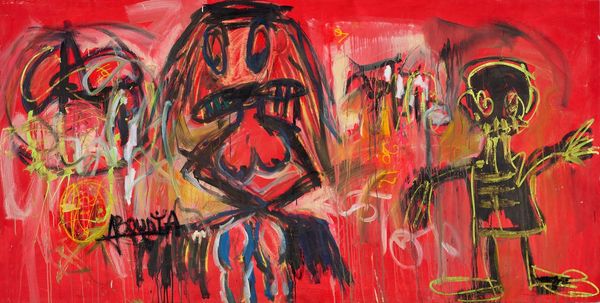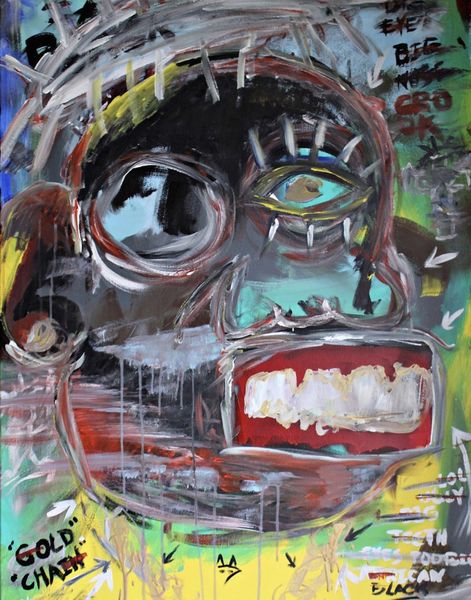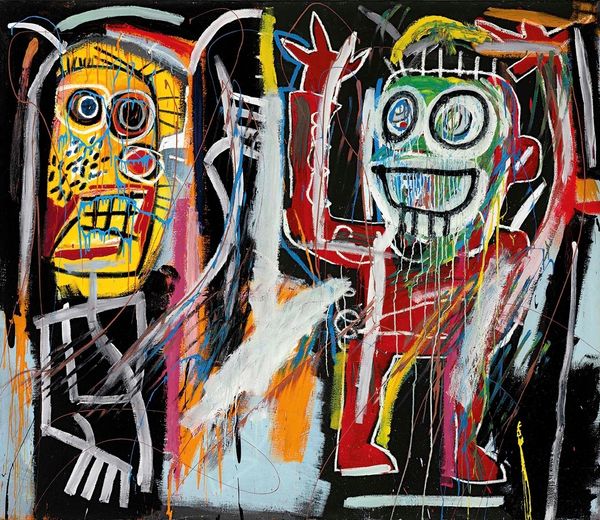
Copyright: Jammie Holmes,Fair Use
Curator: Standing before us is Jammie Holmes' 2019 acrylic painting, "George Stinney Jr." Editor: It hits you hard, doesn't it? Raw and immediate. The colors are unsettling, and those figures, particularly their exaggerated teeth... it's a very powerful initial impression. Curator: Holmes' work often engages with representations of Black figures and historical narratives. Looking closer, we see the suggestive, scribbled text around the two portraits—what appears to be a record of the circumstances surrounding Stinney's wrongful conviction and execution. We might read the work as reflecting contemporary approaches to representation, with specific visual and social functions. The prison stripes, that placard... it implicates the prison industrial complex. Editor: Exactly! The material choices also speak volumes here. Why acrylic paint? What does that choice say about the act of creation and the accessibility of materials, contrasting with perhaps traditional oil paints? And those almost frantic, graffiti-like elements that look rushed around the faces, seem intentional... drawing attention to a systemic injustice and exploring identity, race, and power in the carceral system. The crude lettering, seemingly deliberately unfinished. Curator: One can also think about the implied labor and context around social realism, how they address class and lived experience, with links to art as activism. What social dynamics, institutional forces, and power structures influence how people perceive these injustices? Editor: I appreciate how the portrait resists offering any easy answers, or clear resolution. The painting’s almost violent energy seems appropriate given its content. Even now, years later, that energy makes you feel something that sits in your chest, making you aware. Curator: Absolutely, this piece provokes crucial discussions on justice and memory. I'm reminded of what a range of activist strategies and artistic practices work to produce… a world of meaning beyond this frame. Editor: Indeed. The experience demands interrogation of history. What are the structures that led to the historical fact represented? Curator: I am struck again by how Jammie Holmes manages to use familiar art-making materials to engage with, and speak against, structural injustice. Editor: And hopefully it serves as a starting point for dialogue and change.
Comments
No comments
Be the first to comment and join the conversation on the ultimate creative platform.

